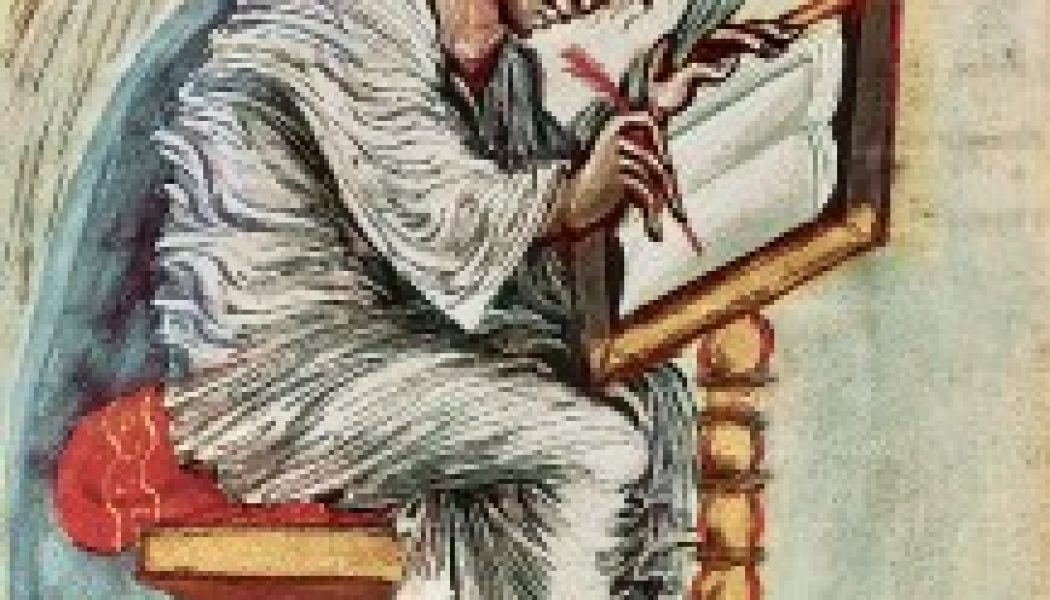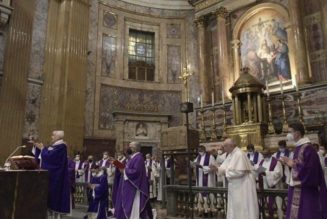Latin, as the primary historical language of erudition and learning in the West, is the sole gateway into the halls of Western thought and humanistic learning. Without the use of this language, we can hardly know ourselves, and certainly not the road that brought us to the modern day.
 “To read Latin and Greek in their original, is a sublime luxury. I thank on my knees him who directed my early education for having put into my possession this rich source of delight; and would not exchange it for anything which I could then have acquired, and have not since acquired.” – Thomas Jefferson
“To read Latin and Greek in their original, is a sublime luxury. I thank on my knees him who directed my early education for having put into my possession this rich source of delight; and would not exchange it for anything which I could then have acquired, and have not since acquired.” – Thomas Jefferson
I
The value of Latin hardly needs be argued to anyone who reads here, but I will nevertheless restate what may be obvious: Latin, as the primary historical language of erudition and learning in the West, is the sole gateway into the halls of Western thought and humanistic learning. Without the use of this language, we can hardly know ourselves, and certainly not the road that brought us to the modern day. Since Latin opens the door to our intellectual tradition, its study is absolutely indispensable even to those with the most threadbare scholastic aspirations. Furthermore, it demands admiration per se, as an object and instrument of mellifluous beauty.
Despite the myriad arguments for the language, of which I have listed above only those which seem to me most salient, there has never been a period in history less literate in Latin than ours since the very dawn of the Roman Republic. Not a century ago, anyone with an education could be counted on to have at least a rudimentary understanding of the language, and a few to have even a great command of it. You would be hard-pressed today to find anyone in your social circle with a real proficiency in Latin. And, what is more, very few students take up the language in the 21st century, though I concede that the numbers are rising.
But even the 20th century could be said to be marked by a widespread lapse in Latin literacy. Latin had long enjoyed a status as the language of scholarship in Europe, and was widely spoken, written, and read well into the 19th century. The rise of vernacular usage during and following the renaissance did little to weaken its position. Even being supplanted as the Lingua Franca was not enough to knock it from its pedestal. What, then, accounts for the decline in literacy within the last two centuries?
I would argue that Latin is the first victim of modernism, its decline analogous to the worst fears surrounding such educational reform as Common Core. The early modern period saw a break in tradition; the pedagogy of antiquity, the Middle Ages, and the Renaissance gave way to modern techniques and innovations, and for the past two centuries we have let our students wallow in the mire they created.
II
The early successes of the scientific method led to a brief period in which that methodology was applied to the humanities as well. In most fields, it fell flat and was abandoned, but applied to language, it became the science of linguistics. Philology had always been important to the upkeep of Latin, preserving it from the natural process of change that all languages undergo, but when it became scientific, it began to be able not only to preserve the language, but to unlock its deepest secrets. Classical studies in the 19th century were marked by furious philological work; dictionaries were refined to the excellent quality we find them today, our understanding of grammar brought to a surgical edge, the great works of Latin literature were translated, and many obscure and corrupt works were finally understood and purified. Much of this work was done by German scholars, such that, even today, anyone who wants to seriously contribute to classical studies will be lost without a sound knowledge of German as well as Latin.
In and of itself, this activity was good, but it should be noted that all this occurred in the highest ivory towers of academia. Below, Latin had ceased to be used as a Lingua Franca, and the vernacular was widely read and written. The practical use of Latin was fairly minimal. The language was expected to provide good reading for a lifetime, and perhaps a scholarly outlet for the brighter students.
The combination of minimized use and ivory-tower philology led to a shift in paradigm at the elementary stage of Latin learning. Students began to be prepared and trained not to understand, read, speak, and write Latin per se, but to analyze it grammatically and produce translations. This was meant to prepare them for the realities of academia, and, at the time, did not have far-reaching consequences. There was still enough usage of Latin to insure that they learned all they once learned, in addition to the new science of linguistics. At the very least, Catholic seminaries preserved the old style of teaching, since they retained the practical use of Latin.
At the end of the 19th century, however, classical philology came to a standstill. Having done nearly everything that could be done, solved nearly every problem that could be solved, scholars moved on to other projects. But Latin education did not. It retained, and does to this day, the grammar and translation model that was meant to prepare linguists, not Latinists. Latin literacy declined sharply as a result, teachers having in the first place stopped teaching Latin in favor of grammar and translation, and students furthermore no longer having the opportunity to acquire that most envious skill in their later learning. After a generation or two, even the teachers began to be illiterate, having never been taught to read, but only to analyze grammar and produce translations at a snail’s pace. This is where we are today.
As I said, Latin was among the first victims of modernity. It is the model for disastrous educational reform, whereby students do not learn their subject better, but actually cease to learn it at all. What is worse, the reform was so long ago, and so slow to show its effects, that hardly anyone alive today even notices. I have met many a student or teacher of a classical school that continues to teach Latin by the modern method, thinking it traditional.
The result has been that students study the language with great love, fervor, and diligence, and, after ten or more years, are unable to read at sight even a simple passage. If you are not a victim yourself, take my word that the problem is widespread. Nobody studies Latin, and those who do cannot read it. Even Dr. Mary Beard, dean of the department of classics at Cambridge University, and for all intents and purposes the Carl Sagan of classical studies, admits in her article “What Does the Latin Actually Say” that she herself cannot read.*
III
We have fallen a long way from grace in this field. Nor has Latin become any less important; its necessity, I would argue, grows daily, as more and more we are cut off from sources and traditions by mere ignorance.
But things do not have to be this way. There is no prohibition on returning to traditional modes of instruction in Latin. We may still learn Latin by the methods of antiquity, the middle ages, and the renaissance. The fruits are obvious: while such methods are employed, Latin literacy flourishes, even in the absence of its daily use. I confess some small bias towards more traditional methods, since, by a stroke of impossibly good fortune, I was taught Latin in those ways.
What marks traditional Latin instruction? It has taken many forms, and has been adopted by several teachers with vastly different styles through the centuries, but there are some common threads. In the first place, students are rarely, if ever, allowed to translate sentences from Latin to the vernacular, or vice-versa. Latin is meant to be understood per se, not converted to an understandable dialect beforehand. If translation is taught, it is as an advanced skill, one suitable to students with many years under their belts.
Second, grammar is heavily deemphasized, at least compared to the modern standard. If any grammar is taught, it will be the barest fundamentals of morphology. This is tantamount to heresy today, when the minutia of declension, conjugation, and syntax are the lifeblood of instruction and learning, but history shows that only a rudimentary knowledge of grammar, and often not even that, is needed to attain literacy in Latin. The subtleties of grammar are to be reserved for linguists and academics, not unfolded to students who cannot yet understand the tongue.
Third, Latin is presented as a language, one that is used for communication between human beings, rather than as a peculiarly arcane crossword puzzle. Ideally, it is spoken and heard before it is written and read. Languages enter through our ears; only writing, the image of speech, enters the eyes. This presents a problem for many modern teachers, who have barely the ability to read the language, much less to produce on a dime grammatically sound Latin. Where it is impossible to find teachers proficient in spoken Latin, the alternative is to provide the student with such copious simple reading as to make it impossible for him not to learn. In time, he will reach the same level as the student to whom Latin is spoken daily .
IV
Those are the fundamentals. How, then, can a person who wants either to learn Latin or to teach his students do so today? In the absence of fluent speakers, his best option, in my opinion, is the Lectio Divina method employed in the Middle Ages.
At its core, this consists in merely reading the Latin Vulgate for spiritual nourishment, with the goal of learning Latin secondary. How does one read in a language he does not yet know? There are three aids to which he can avail himself: a teacher, who stands nearby to resolve whatever difficulties may arise, a translation, which he can consult when a teacher is not available, and his own knowledge of the text, which is a constant guide. How many of you can recite the first chapter of the Gospel of John from memory? Be happy to know it says the same thing in Latin, and your preexisting knowledge is the key to progress. Slowly and by degrees, you will unlock the whole language, merely by reading the Bible with the English in one hand, and the Latin in the other, and comparing the two as needed. Thomas Aquinas and most of the scholastics learned the same way, so we have no reason to doubt its efficacy. And if your old teacher’s voice should ring in your ear to reprimand you for using a translation, be confident that within a few years’ time so employed, you will know more Latin than he does.
Beyond this simple method, there are increasing opportunities to speak Latin in the modern world. In fact, a whole movement, originating in Catholic seminaries with such priests as Fr. Suitbert Siedl and Fr. Reginald Foster, has arisen to restore Latin pedagogy to its former effectiveness. The seminaries, as I mentioned, never abandoned traditional methods until after the reforms of the Second Vatican Council, having always had the need of practical knowledge of Latin.
If you should desire to hear and learn Latin by ear, like a medieval or renaissance monk, you might visit the Cenaculum of the Family of Saint Jerome, or the Familia Sancti Hieronymi. The Paideia Institute likewise provides opportunities to learn Latin traditionally. Beyond those two, there are SALVI, the Conventiculum Lexintoniense, and the lay section of Veterum Sapientia at Belmont Abbey College, among others.
To conclude, I would give you my own testimony. I have been teaching and studying Latin by traditional methods for seventeen years now. My own ability with the language far surpasses what I ever could have expected had I studied by grammar and translation, and my students show promise of similar achievement. Even the less gifted among them have been able to benefit tremendously more than anyone could have anticipated. I have likewise witnessed dozens of men and women, young and old, who learned by modern methods come to a real proficiency with Latin by even short exposure to traditional pedagogy. I therefore vehemently urge both teachers and students of the language to consider the state of Latin literacy, and do whatever they can to help us restore the too-long-lost understanding of our second mother tongue.
Wrote G.K. Chesterton: “There is one metaphor of which the moderns are very fond; they are always saying, “You can’t put the clock back.” The simple and obvious answer is “You can.” A clock, being a piece of human construction, can be restored by the human finger to any figure or hour. In the same way society, being a piece of human construction, can be reconstructed upon any plan that has ever existed.”
The Imaginative Conservative applies the principle of appreciation to the discussion of culture and politics—we approach dialogue with magnanimity rather than with mere civility. Will you help us remain a refreshing oasis in the increasingly contentious arena of modern discourse? Please consider donating now.
Notes:
*Mary Beard, “What Does the Latin Actually Say?” Times Literary Supplement, n.d.
The featured image is “Saint Matthew Writing a Gospel” and is in the public domain, courtesy of Wikimedia Commons.








![“The first thing you can always do is thank God” [must-watch video]…](https://salvationprosperity.net/wp-content/uploads/2022/01/the-first-thing-you-can-always-do-is-thank-god-must-watch-video-327x219.jpg)
